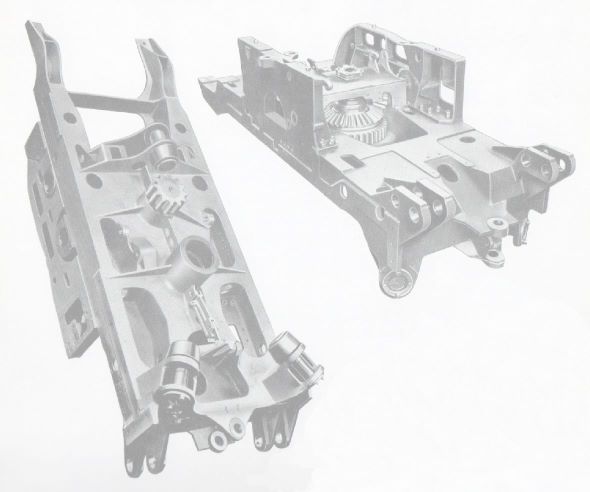
I suppose you could say I was privileged to be born in 1943 during the middle of the second world war. The subsequent benefits came with long lasting peace and stability, although the world now seems to be growing restless again. For mechanically minded boys of our generation it also brought much of interest and for me particularly halcyon days chasing diggers over a war rubbled landscape befriending their drivers and immersing myself in the gears and clutches of the machines they drove.
Building The Iron is a story of post war industrial Britain and a way of life which no loner exists when large factories employed thousands of workers to manufacture and assemble product by an individual or depending on its size and complexity as in my own experience, a small gang of men. Machine tools used to manufacture parts were hand controlled by skilled operators using micrometers for measurement doing hand calculations using paper, pen or pencil. Sometimes the pencil would be hitec with a rubber at the other end for deleting. No digital readouts, hand held calculators were yet to be invented, no mobile telephones and no internet. This was what they called hands on engineering with teams of men constantly on their feet unlike like so many jobs today. Transportation of the finished goods was by British manufactured vehicles like Leyland, Scammell, Atkinson, AEC, Foden etc. Where did they all go? Coal mines were at full tilt all over the country keeping power stations running, steam power keeping the railways chuffing; though soon to be converted to diesel. We manufactured cars and aircraft with much to come and exported all over the world. Engineering was a main subject in education with industry encouraging schoolboys to reproduce working miniatures of their end product with Meccano for engineering and balsa wood model aircraft. Oh how different from from today's thumb dancing on computer tablets!
Coming into contact with diggers and tipper trucks around Swansea building sites one name seemed to be more familiar than others with plenty of room to stand behind the driver pulling and pushing the bank of control levers in front of him. The name was Ruston Bucyrus and so impressed was I by its construction and the way it worked that I persuaded my parents into allowing me to leave home and live in lodgings for the next five years pursuing my dream to build them. I shall always be grateful and dedicate this book to them. So let me take you with me on that journey back to the 1960's for a walk around the factory in its heyday, rub shoulders and meet the people and components that made it happen. We'll go through the machine shops first and see how they set up the main revolving frames for the Richards horizontal borer and then watch them machine the truck frames before getting your hands dirty in No 3 Bay erecting shop; its like a Cathedral in there it's so high. Can you believe eighty feet?
We can join 38 and 54 RB build gangs first; then we'll assemble the drum shafts and general deck gear. After that we'll be moving on to truck frame and lower works calling Bob and Beano over, our resident slingers, to help lift the rev frame for floating across to the marry up with the bottom half. That will be enough for you to be getting on with and assimilate first and for heaven's sake make sure to stand clear when they track the whole thing up. There's twenty ton of undercarriage hanging on there. In No1 bay next door is the Noble & Lund Horizontal Planing machine. Its the biggest in the country with twin fifty foot beds. We'll help set that up for machining some 150-RB side frames and then go over to 5 Bay and see how they generate the gears on Sunderland planing machines. By the time you've done all that a few years will have passed and you might be beginning to think like an engineer so I'll take you up to 18 Bay then where they are on a roll building nearly twelve 22-RB machines a week. You'll spend three or four months there on the gangs but you haven't finished yet! You have to rope them up and that's going to be a lot of fun especially on test where the real fun begins. I hope you will enjoy reading about them. You can find out more about swansea boyhood days in my previous book - THE SLIP.
